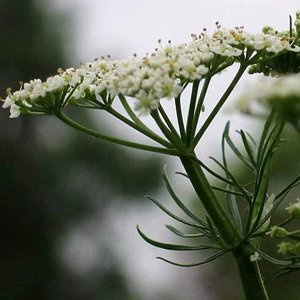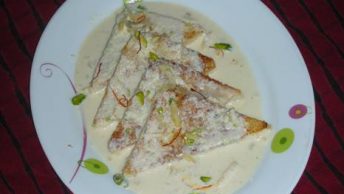JEERA (Cumin)
(Cuminum cyminum)
Family: Umbelliferae
Sanskrit name: Jiraka
Hindi name: Jeera
Grind cumin seeds very fine. Add a drop of clarified butter and a pinch or sea salt. Grind fine again. Wet and apply for scorpion stings.
~ Treatise of Charaka (first century A. D.)
The flowers or this small, scented, herb open in parasols, transmitting their aroma to the seed, a simple, unassertive spice used by Indians to season curries, pickles, or breads.
Among the earliest seasonings cultivated by mankind, the great virtue of the cumin seed lies in its digestive properties when roasted. Sometimes it is also crushed to enhance its medicinal value in counteracting dyspepsia. Because it is so easily digested and so effective in the expelling or gas from the stomach and the intestines, cumin is prescribed by Ayurvedic doctors for chronic dysentery and diarrhea, and commonly used by Indian mothers to make gripe water for
their infants.
Indians consider cumin a necessary seasoning in food for convalescing patients. It is also traditional to the diets of pregnant women as an effective antidote to morning sickness. Nursing mothers find cumin lactogenic, increasing the mother’s milk, while its oil is effective against eczema.
In medieval times cumin had a considerable trade value as one or the fabled spices of India, the aromatic oil used for perfumes and liqueurs by neo-classical Europeans. By the seventeenth century the roasted seeds were a great favorite
both in the Islamic cooking of the Ottoman Empire, and in the bread and cake recipes or European courts.
But in India, cumin seed is cooked in street snacks and banquets alike, or mixed in a cooling, appetizing, and healthy protection against the discomforts of indigestion, or the hazards of waterborne stomach infections so common during tropical summers.
Excerpted from The Garden of Life by Naveen Patnaik.
Illustration: Photograph of a flowering Cumin plant.







